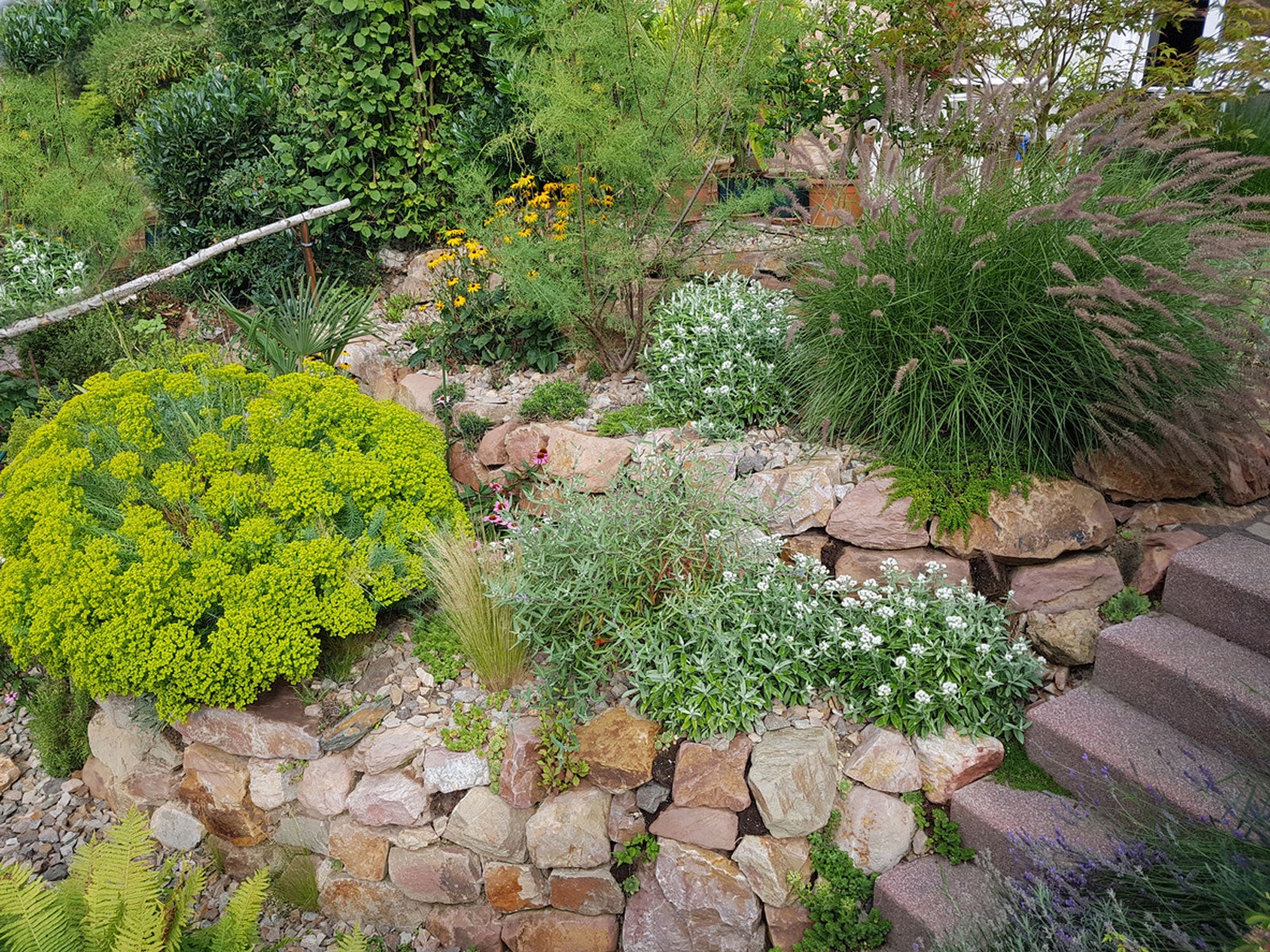Hillside Rock Garden: How To Build A Rock Garden On A Slope


Landscaping a slope is an engineering challenge. Water and soil both run off; plants are affected by gravity; and much of the soil nutrients and any fertilizer will simply slide down. However, if you build a rock garden on a slope, the rocks become a barrier to slow or even stop a lot of those losses.
The sloped rock garden is also a visual triumph where inactive objects blend with living greenery. To create the perfect rock garden for sloped yards, try the following tips and tricks.
Planning a Hillside Rock Garden
Got a hillside? Try building a hillside rock garden. There are certain challenges to face, but once you have the infrastructure in place, the effect can be both appealing and functional. Drainage, soil retention, and choice of plants all come into play when planning a rock garden on a hill.
The first item to be addressed is drainage. Graduated spaces of the landscape pose questions when considering garden beds. A rock garden on a hill will create a site where water pushes soil off the hill. You can install perforated pipe or terrace the space so water can either be directed off or pool to fuel plant growth.
In arid regions, it's best to save rainwater. However, in areas where a lot of precipitation is expected, you can guide excess water off the slope. Determine which is the primary goal and go from there.
Hardscaping a Sloped Rock Garden
Once you have addressed drainage or conservation of water in your region, it is time to install the rocks. On a deep slope, use very large rocks to hold the hillside together and give a firm terrace on which to plant.
Rocks are more effective barriers than railroad ties, which many gardeners use on hills. Railroad ties emit toxins that pollute rainwater and soil. Rocks are safer and a lifetime erosion solution. You may need to hire a company with heavy equipment to move rocks into place.
Sign up for the Gardening Know How newsletter today and receive a free copy of our e-book "How to Grow Delicious Tomatoes".
Rocks should be buried in the soil one third of its size. This will keep the slope stable and retain soil.
Plants for a Rock Garden on a Slope
Ensure that the soil is appropriate for your plants. You may have to bring in some good garden soil if the area has already lost its topsoil. Then it’s time to select the plants. They should be suited to the lighting of the area and be low maintenance.
Low growing plants that spread are ideal. Some suggestions are:
- Creeping Juniper
- Sweet Woodruff
- Ajuga
- Kinnikinick
- Snow in Summer
- Rockcress
- Candytuft
- Periwinkle
- Creeping Phlox
- Sedum
- Hens and Chicks
Other options might include small evergreens, bulbs, and herbs such as thyme, lavender, and sage. Since slopes can be troublesome to maintain, select plants that will be self-sufficient once established, yet provide several seasons of interest.

Bonnie Grant is a professional landscaper with a Certification in Urban Gardening. She has been gardening and writing for 15 years. A former professional chef, she has a passion for edible landscaping.